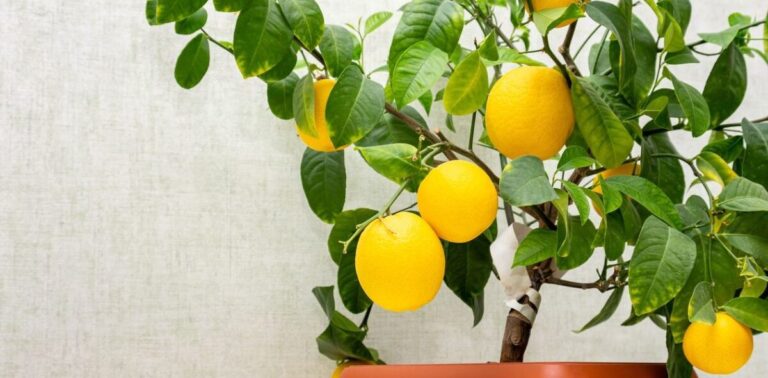Ever dreamed of plucking fresh, juicy lemons right from your living room or balcony? Starting your own lemon tree journey might seem daunting, but I’m here to turn that dream into a doable reality! This guide is packed with tips and tricks for successfully growing and caring for a potted lemon tree, ensuring a bountiful, tasty harvest.
Picking the Perfect Lemon Tree and Pot

The first step is choosing a lemon tree variety that suits your space and needs. Some varieties, like the Citrus limon ‘Ponderosa’ and Citrus limon ‘Improved Meyer’, are particularly well-suited for pot growing due to their cold resistance and ability to bear fruit in containers.
Then, you’ll need the right pot. Start with a pot about 16 inches in diameter for young trees, ensuring it has a drainage hole to prevent water from pooling and causing root rot. A saucer underneath can catch any excess water.
The Ideal Soil Mix for Your Potted Lemon Tree
Getting the soil mix right is crucial for your lemon tree’s growth. The mix should be light, well-draining, and nutrient-rich. A great DIY mix includes:
- 60% potting soil designed for Mediterranean or citrus plants
- 20% well-decomposed compost or manure
- 10% river sand
- 10% perlite or vermiculite to ensure proper drainage
Regularly check that the soil hasn’t compacted and gently loosen it to prevent a crust from forming on the surface.
Watering and Feeding Your Lemon Tree
Lemon trees in pots have significant water needs, especially during growth and fruiting seasons. Water every two to three days, ensuring the soil stays moist but not soggy. Reduce watering in winter when the tree is less active.
Nutrition-wise, lemon trees crave nitrogen for growth and fruit production. Choose a citrus-specific fertilizer rich in nitrogen, potassium, and phosphorus. Adding compost or well-rotted manure to the mix can provide additional nutrients.
Pruning and Caring for Your Lemon Tree
Pruning is key to encouraging fruit production and keeping your tree manageable. Here are some pruning tips:
- Remove dead, damaged, or diseased branches year-round.
- In late winter, trim branches that cross or grow inward.
- Cut back suckers growing from the trunk base.
- Thin out dense branches to allow light and air to penetrate.
Also, keep an eye on your tree’s health and treat with natural insecticides if pests like aphids or scale insects appear. A spray of soapy water can also deter pests.
Pollination and Fruit Bearing
Lemon trees are self-fertile, meaning they don’t need another tree to produce fruit. However, hand pollination can boost fruit set. Simply transfer pollen from one flower’s stamen to another’s pistil using a small brush or cotton swab. Repeat with several flowers to improve your chances of success.
Fruit production in potted lemon trees can be fickle, influenced by factors like variety, tree age, growing conditions, and care level. But with patience and attention, your lemon tree should reward you with delicious fruits.
By following these guidelines, you can successfully grow and maintain a lemon tree in a pot. Whether for the joy of harvesting your own lemons, the beauty of its evergreen foliage, or its intoxicating scent, a lemon tree is a fantastic addition to your home garden or patio. So why wait? Embark on this citrus adventure and enjoy the fruits of your labor!






